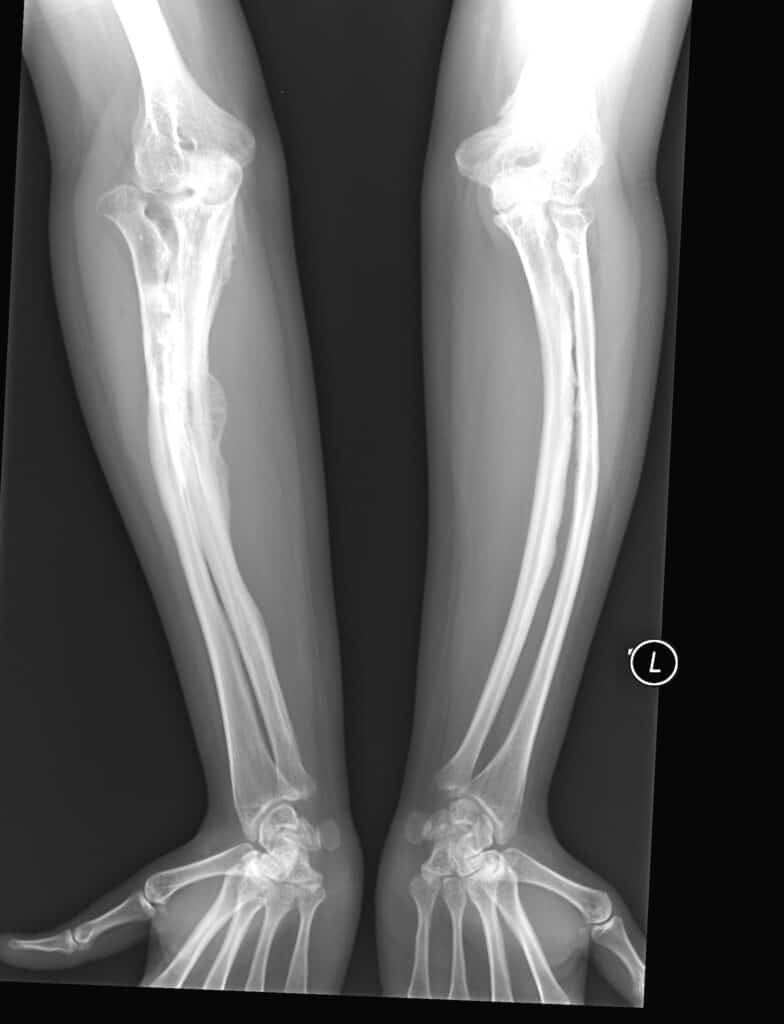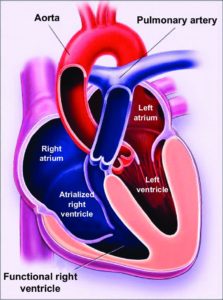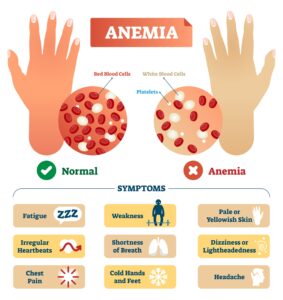Overview
Brittle bone disorder results in bones that are weak and shatter readily. It typically manifests at birth, however it has only been documented in children with a family history of brittle bone disease. A deficiency in the gene that generates type 1 collagen causes it.
Also referred to as osteogenesis imperfecta (OI). Osteogenesis imperfecta is one of the most prevalent inherited bone conditions. The condition primarily affects bones, teeth, ligaments, eyes, and skin, and is characterized by bones that are weak and easily fractured. There are four distinct kinds or forms of osteogenesis imperfecta.
Various types of brittle bone disease
There are four major types:
- Type I: The most common kind of brittle bone disease, OI Type I causes minor bone fragility and stunts the growth of some children. Infants with this kind of OI frequently break a bone while learning to walk. Additionally, many youngsters suffer from easy bruising and hearing loss.
- Type II: This kind of OI, which is brought on by a dominant gene mutation, is among the most severe. Numerous infants with OI Type II have a tiny chest, soft cranium, short limbs, and frog-like placement of the legs. Additionally, respiratory issues are widespread, making it a disorder that threatens the lives of many.
- Type III: Typically, infants with OI Type III have already had fractures in utero. Type III OI is characterized by a lower stature, curved spine, rounded rib cage, and other bone abnormalities.
- Type IV: This moderate form of brittle bone disease is linked to short stature and can be detected in early or late childhood. After adolescence, the frequency of fractures in children tends to decrease, whereas in infancy they are common.
- In addition, categories IV, V, and VI exist, but they are not addressed in this article.
How prevalent is it?
The incidence of OI is roughly 1 per 20,000 births, according to estimates. In the United States, the estimated prevalence of OI is between 20,000 and 50,000. This defines it as an orphan illness, which in the United States is classified as a disease affecting fewer than 200,000 patients.
Signs and symptoms of brittle bone disorder
Children with OI may suffer symptoms ranging from extremely mild to severe. The intensity may vary among family members who are impacted.
- Fractures can occur with low force; however, this varies between children.
- Bones may have an altered form, such as being shortened or bowing.
- The whites of the eyes may appear grayer or bluer than usual.
- Joints can be hypermobile or extremely elastic
- Joint or bone discomfort may be present to some degree
- Problems with tooth formation (dentinogenesis, or DI)
- Children with OI may tire more quickly than their peers.
- People with OI typically develop hearing issues after puberty.
- Children with OI are typically shorter than their peers.
Why does it happen?
OI is caused by monoallelic mutations in the COL1A1 and COL1A2 genes (17q21.33 and 7q21.3) encoding the alpha1 and alpha2 chains of type 1 collagen in roughly 90% of cases. These variations can result in OI types I-IV. In Type V, the variation is located in the IFITM5 gene’s promoter region (11p15.5). Over 15 causative genes have been found, and some geno-phenotypes are emerging: increased bone mass is reported in children with BMP1 variations. Children with homozygous WNT1 variations exhibit ptosis and neurodevelopmental delay, whereas craniosynostosis problems are linked to P4HB or SEC24D mutations.
Genetic inheritance
The brittle bone disorder can be autosomal dominant or autosomal recessive.
Dominant OI
Most individuals with OI exhibit a dominant form. This means individuals inherit one copy of the normal gene and one copy of the OI-causing gene. The aberrant copy of the gene is more powerful or “dominant” than its normal counterpart. This causes OI in an individual. Each kid of a parent with a dominant mutation has a 50 percent probability (1 in 2) of inheriting the condition. Some children with the dominant form of OI inherit from a parent the gene that causes OI. Others are born with the dominant form of OI despite the absence of a family history of the condition and the occurrence of the mutation in their genome for the first time.
Recessive OI
A subset of OI patients has a recessive type of disease. People with recessive OI have parents who do not have OI, but who both carry the disease-causing gene mutation. When both parents possess the recessive gene for OI, there is a 25% risk (1 in 4) of having a kid with the disease per pregnancy. Unaffected or asymptomatic siblings of an individual with recessive OI have a two-thirds chance (2 of 3) of being carriers of the disease. If one parent develops OI due to a recessive mutation, all of their offspring will possess a defective gene that causes OI, but will not necessarily develop the condition.

Diagnosis of brittle bone disorder
Through genetic testing, healthcare professionals can detect suspected OI before birth. If one or both parents are OI carriers, a genetic counselor can advise parents on OI risk factors.
To confirm an OI diagnosis following a newborn’s birth, medical professionals may use:
- X-rays, which can reveal fractures or fractures that have healed.
- Genetic studies to look for mutations in the collagen gene.
- Biochemical tests, which could include a skin sample for collagen analysis.
Treatment of brittle bone disorder
There is no treatment for bone fragility illness. There are, however, supportive therapies that can minimize your child’s risk of bone fractures and improve their quality of life. Among the treatments for the brittle bone disease are:
- Physical and occupational therapy to improve the mobility and muscle strength of your kid
- Bisphosphonate drugs to strengthen the bones of your child
- Medication to alleviate any pain
- Low-impact exercise for bone development
- Surgical insertion of rods into your child’s bones
- Surgical reconstruction to treat skeletal malformations
- Mental health counseling for the treatment of body image concerns
Life expectancy
Patients with type I of the illness have a life expectancy comparable to that of the general population. In contrast, type II patients seldom live beyond the age of two and often pass away within the first weeks of life. The evaluation of the life expectancy of individuals with types III and IV is made more difficult by the fact that lifestyle choices might result in fatally traumatic injuries that would not have occurred otherwise or would not have been fatal in the general population. Life expectancy in type IV OI is believed to be close to that of the general population, however, in type III it is lower.
A 2016 analysis of data from Denmark’s National Patient Register discovered that across all categories of OI, all-cause mortality was three times greater, resulting in a loss of around seven years for females and nine years for males. Many type III OI patients die in their 20s, 30s, and 40s, according to a 1996 study published in the British Medical Journal; individuals who survive to age 10 have a greater life expectancy than neonates.
Mobility
Adults with mild (type I) OI require few items of adapted equipment, despite reaching motor milestones significantly later than the general population as infants.
With adapted equipment including crutches, motorized wheelchairs, splints, reach extenders, and/or home modifications, many people with moderate to severe OI can achieve or maintain a high level of independence. Upon completion of treatment and physical therapy, the expected maximum levels of mobility are unassisted community walking for type I, household or exercise walking for type III, and household or community walking for type IV; however, due to the variability of OI between individuals, the actual level of mobility achieved may be less than the expected maximum.



